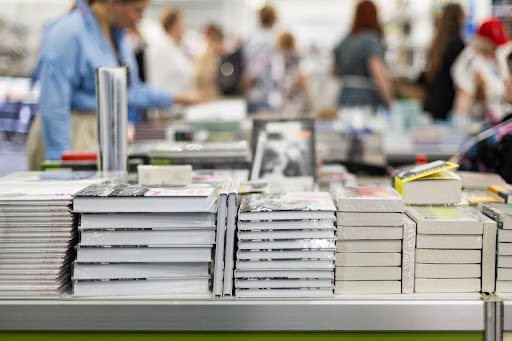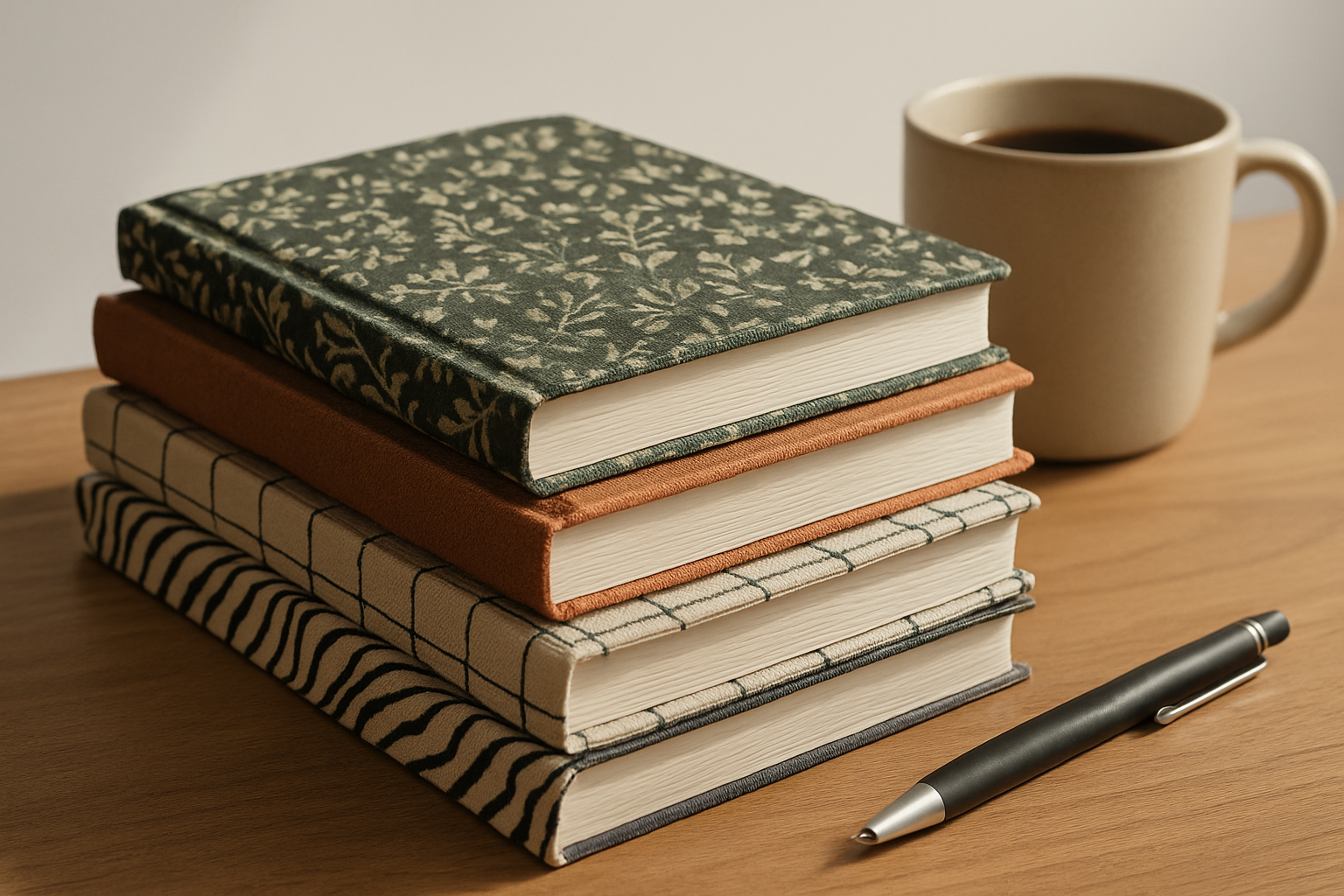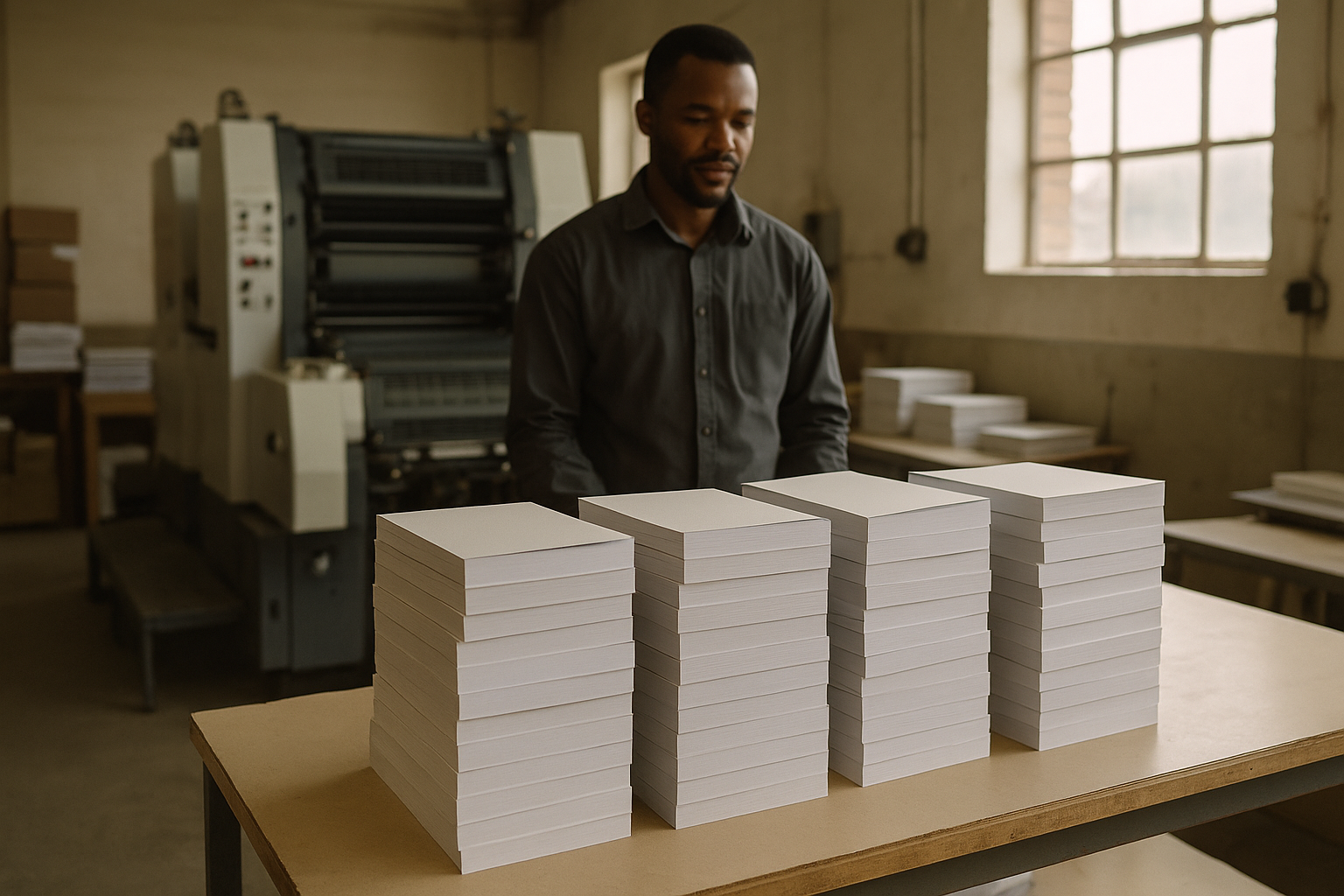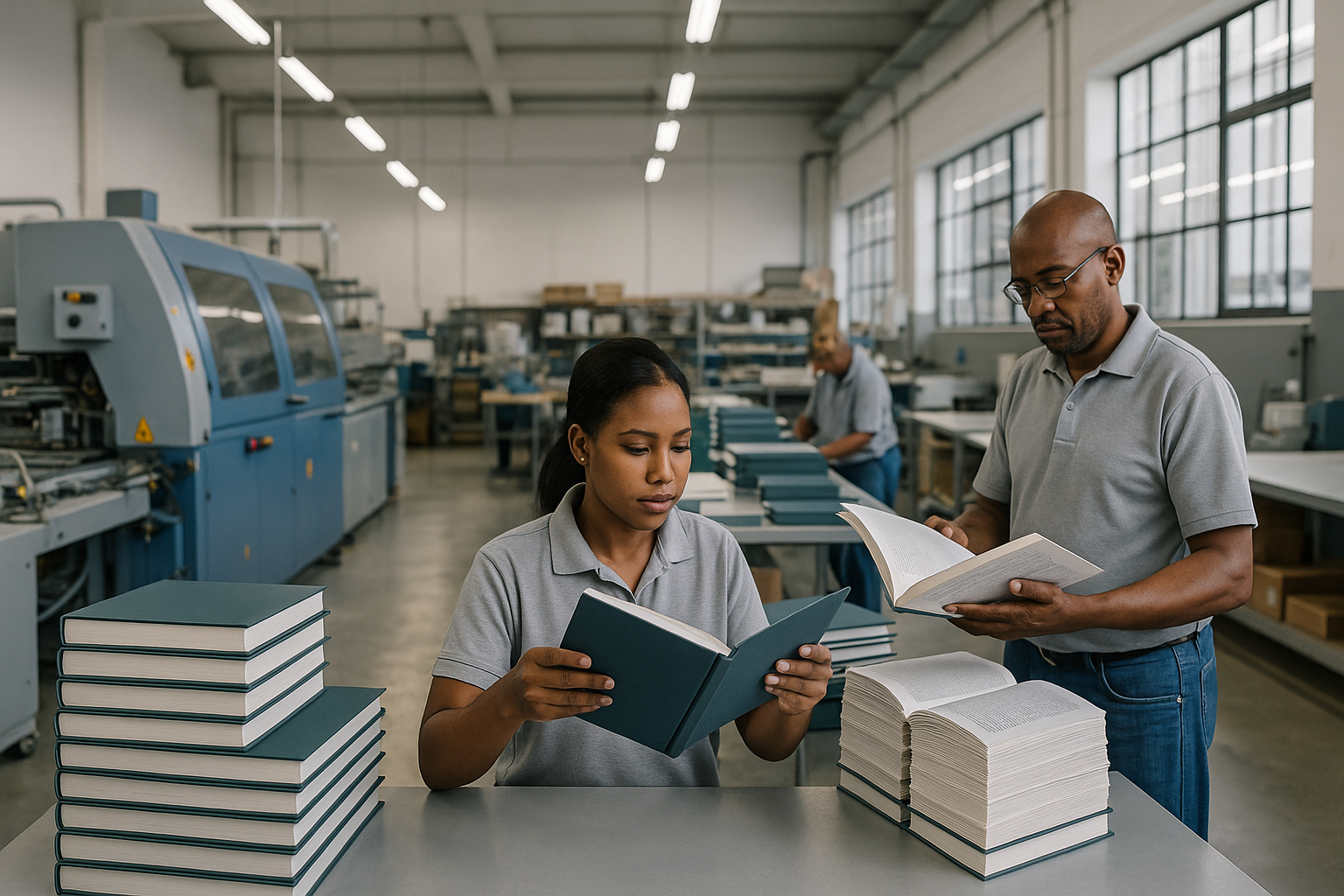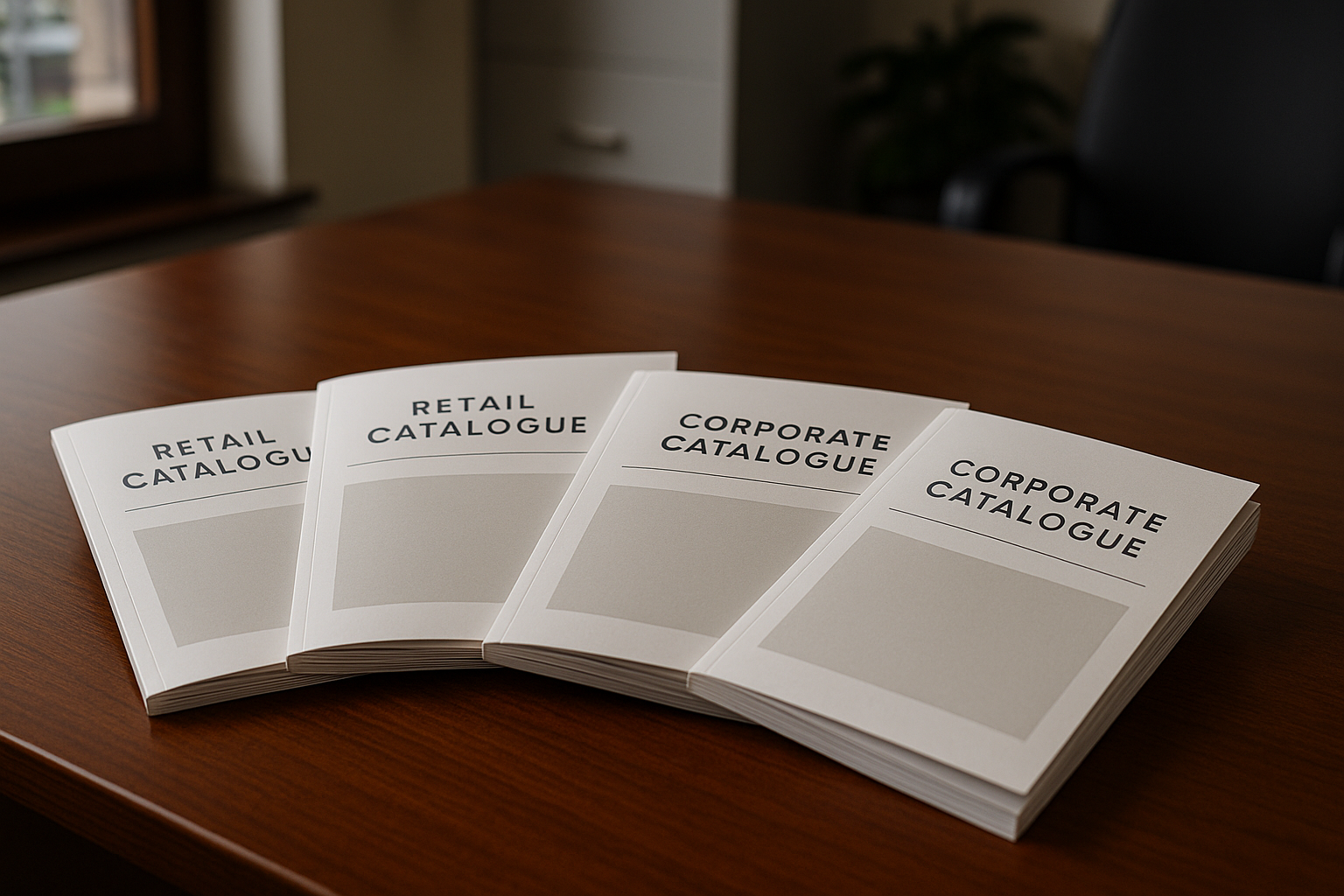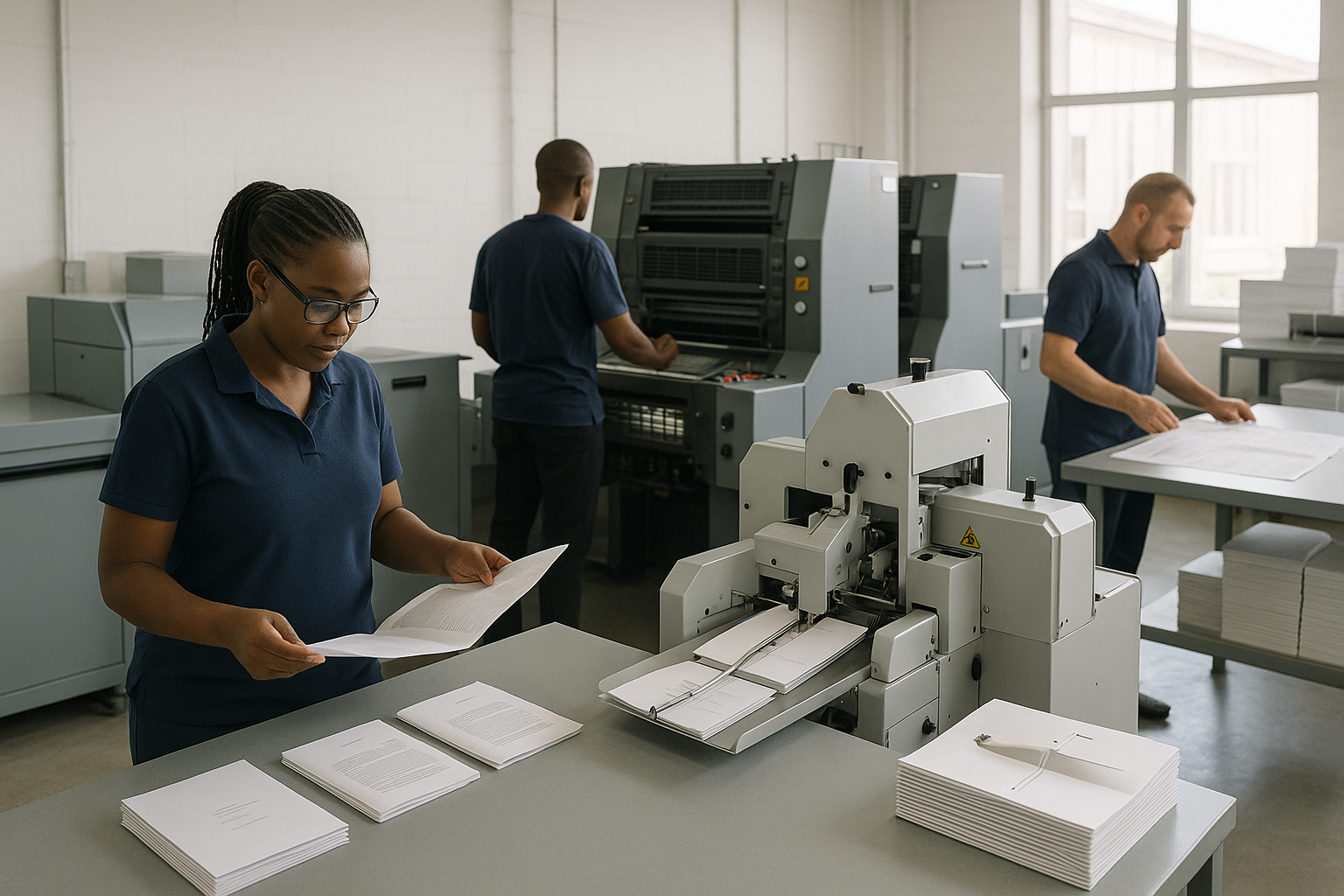South African printers are increasingly adopting eco-friendly practices to meet the needs of schools, businesses and publishers while cutting waste and carbon. This page explains how printers in South Africa deliver sustainable, cost-effective print solutions across commercial printing, school textbook printing, booklet and catalogue work, packaging and print-on-demand projects.
How are South African printers leading in eco-friendly printing?
South African printers are investing in greener presses, recycled and FSC-certified papers, low-VOC inks and efficient production workflows to reduce environmental impact. Companies like Print It ZA combine modern digital presses with responsible sourcing and end-to-end job management so clients get high-quality brochures, newsletters and textbooks with smaller footprints. The shift is driven by demand from schools and universities for bulk educational printing, as well as by small business marketing needs and publishers seeking custom print runs.
According to the World Wide Fund for Nature (WWF), pulp and paper supply chains are a major driver of deforestation, creating urgency for printers to use sustainable stock and certified sources.
What eco-friendly options do printers offer for different print jobs?
Eco-friendly printing covers a wide set of options, and South African printers offer many of them across the industry sectors. Options include:
- Recycled and FSC-certified paper stocks
- Eco Inks
- Digital print-on-demand to cut inventory and obsolescence
- Cold-foil or aqueous coatings instead of solvent varnishes
- Energy-efficient production scheduling and waste recycling
For example, a school ordering bulk educational printing for an upcoming term can choose print-on-demand textbook printing to avoid overproduction, or specify recycled boards for covers in booklet or catalogue printing. Printers supporting educational publishing often pair these options with fast turnaround printing to meet term preparation deadlines while keeping environmental impact low.
According to industry reports, many printers also track waste and report reductions year-on-year as they adopt digital workflows and automated imposition to reduce paper waste.
How does eco-friendly printing affect cost and turnaround times?
Many clients assume greener options are more expensive, but competitive South African printers balance costs with efficiency. Digital print-on-demand reduces inventory costs and lowers unit price for short runs because there’s no plate-making or large storage needs. Bulk litho runs remain cost-effective for very large quantities, such as school textbook printing, where economies of scale apply.
Turnaround depends on the job type and finishing requirements. Fast turnaround printing is achievable with digital presses for materials like business cards, flyers and training manuals, while complex packaging or custom publishing may need extra time for finishing. Printers will often provide a cost-versus-turnaround table so schools, events teams and marketing departments can decide:
| Job Type | Typical Best Option | Cost/Unit | Turnaround |
| Short-run brochures, flyers | Digital printing | Low to medium | 3 to 5 working days |
| Large textbook runs | Litho printing | Low per unit | 1–3 weeks |
| Catalogues and booklets | Litho or hybrid | Medium | 1–2 weeks |
| Packaging and custom publishing | Specialist presses | Variable | 2–4+ weeks |
Can schools get sustainable bulk educational printing in South Africa?
Yes. Many South African printers specialise in bulk educational printing for schools and tertiary institutions, offering options like durable recycled stocks, water-based inks and reinforced binding for textbook longevity. Educational printing often requires fast delivery ahead of each school term, so printers coordinate print runs, warehousing and delivery across provinces to ensure materials arrive for curriculum rollout.
For curriculum-facing materials and training manuals, printers can provide custom publishing services and version control so updated editions are printed on demand, helping education providers avoid waste from obsolete stock. See examples of large-scale textbook and education projects at the Department of Education or through specialist printers and their education services, including dedicated textbook printing workflows like the ones used by print houses that manage both printing and distribution.
According to the South African Department of Basic Education, effective term preparation depends on timely access to learning materials—making reliable, eco-aware printers an important partner for schools.
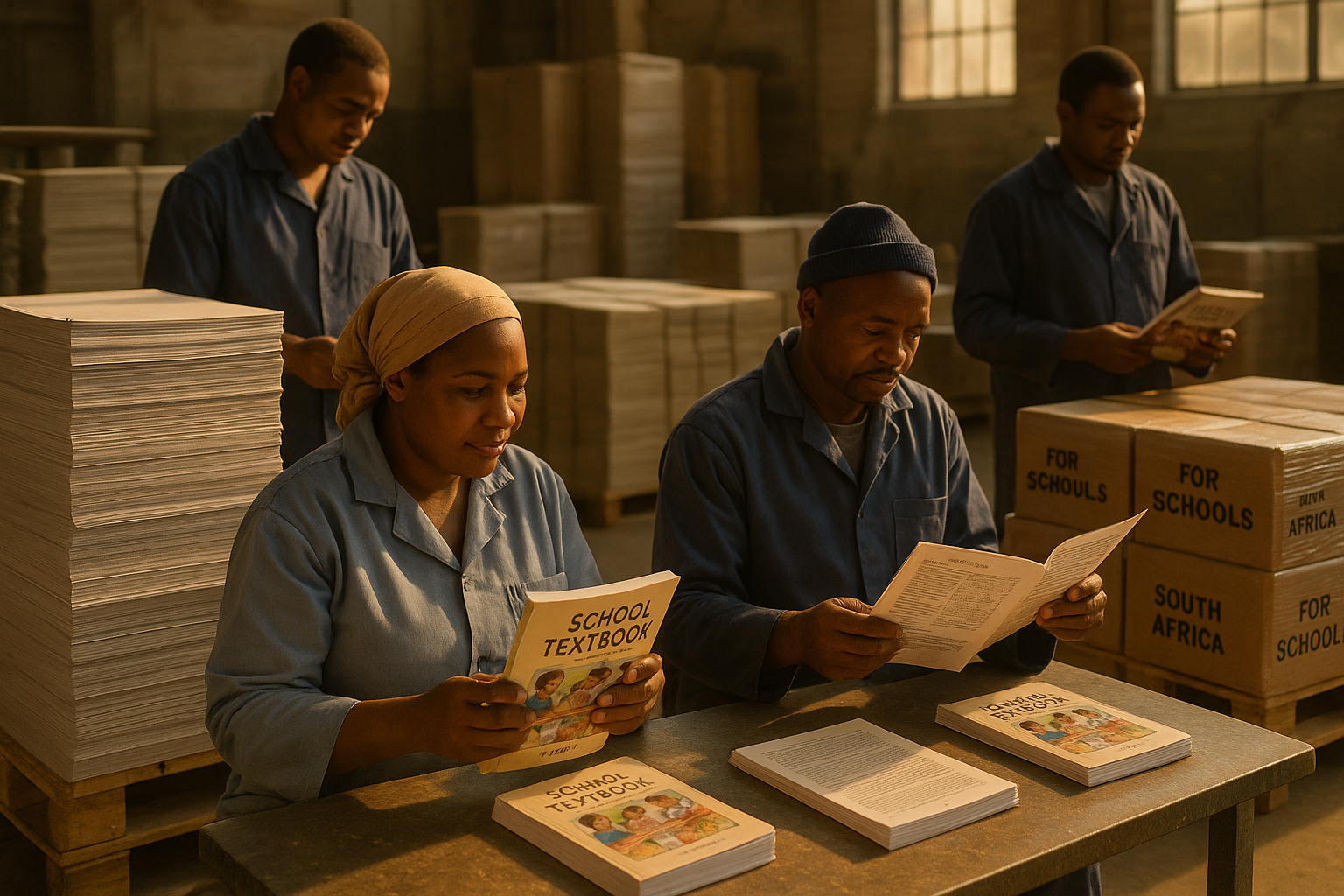
What finishing and customisation options are eco-friendly?
Custom finishes often add perceived value, and many finishes can be selected with sustainability in mind. Eco-friendly finishes include aqueous coatings (water-based) and low-VOC varnishes. Foil effects can be achieved with cold-foil techniques that reduce solvent use, and embossing or debossing add tactile appeal without chemical coatings.
Printers offering brochure printing services, booklet printing or catalogue printing will advise on finishes that meet visual goals while keeping the environmental profile low. For business cards and marketing collateral, recycled or Cotton papers give a premium feel and are recyclable, supporting small business marketing materials with a green message.
- Aqueous coating – fast drying, recyclable compatible
- Biodegradable lamination – protects material, better end-of-life
- Cold-foil – metallic effects without solvents
- Uncoated options – fully recyclable and often preferred for readability
How do printers handle packaging and custom publishing sustainably?
Packaging printing requires careful material selection to meet functional needs and end-of-life considerations. South African printers use recycled corrugated board, mono-material laminates, and water-based adhesives to make packaging easier to recycle. Custom publishing — including books printing and print-on-demand projects — benefits from digital workflows that eliminate minimum order constraints and reduce waste.
Manufacturers also optimise production to reduce offcuts and use nesting/imposition software to maximise yield from each sheet. For publishers, this means lower warehousing costs and ability to run smaller, eco-conscious print runs that are still affordable.
How quickly can South African printers deliver nationwide?
Delivery speed depends on the print method and distance, but many printers in South Africa offer national delivery services that cover major metros and smaller towns. For time-sensitive work like event promotions or term-start textbooks, printers combine fast turnaround printing with coordinated courier or pallet delivery. Smaller runs such as flyers, business cards or training manuals can often ship within 24–72 hours from order.
Logistics partners and regional distribution hubs allow printers to offer same-week delivery to most urban centres. When planning large bulk educational printing projects, discuss staging and phased delivery to match school timetables and reduce storage time.
How can small businesses use printers for eco-conscious marketing materials?
Small businesses benefit from the range of services that South African printers provide: brochure printing services for sales collateral, customised business cards on recycled stocks, and print-on-demand newsletters or product catalogues to avoid overprinting. Printers help small business owners choose paper weights, finishes and formats that match budgets while supporting brand sustainability goals.
Case study approaches include starting with short-run tests to refine designs, using booklet printing for product guides, and combining digital variable-data printing for personalised offers that enhance response rates and reduce wasted mailings.
Many printers also advise on integrating print with digital campaigns to measure ROI and reduce unnecessary print volume.
What certifications and standards should you look for?
When choosing a printer, look for certifications that demonstrate commitment to environmental and quality standards. Common certifications include:
- FSC (Forest Stewardship Council) or PEFC for responsibly sourced paper
- ISO 14001 for environmental management systems
- Chain-of-custody documentation for recycled content
These certifications help schools, publishers and businesses prove the provenance and sustainability of their printed materials. Request a printer’s certification details and ask how they track waste, emissions and responsible ink usage to ensure the whole project aligns with your sustainability objectives.
How do you choose between litho and digital printing for sustainability?
Choosing litho (offset) or digital printing depends on run length, turnaround and the sustainability trade-offs. Litho is typically more efficient for long runs like mass textbook production because per-unit energy and material usage decreases at scale. Digital is better for short runs, variable-data jobs, and print-on-demand that avoid overproduction and storage.
Decision guide:
- Choose litho for large, consistent runs (bulk educational printing, large catalogues)
- Choose digital for small runs, fast turnaround, and variable or personalised content
- Consider hybrid workflows when a project has mixed requirements (e.g., litho body pages and digitally printed covers for late edits)
According to industry analysis, digital print volumes have grown substantially as publishers and marketers seek more flexible, lower-waste production methods.

How to request quotes and plan large print projects with eco goals?
Start by gathering content, final sizes, quantities and expected delivery windows. Provide your printer with details on desired materials (recycled/FSC), finishes, and whether you need warehousing or phased delivery. Ask for a breakdown of options by environmental impact so you can compare cost and sustainability trade-offs clearly.
Useful checklist when requesting quotes:
- Final page count and trim size
- Number of units and staging/delivery schedule
- Preferred paper stocks and certifications
- Binding and finishing requirements
- Packaging and distribution details
Many printers will provide sample swatches and mockups, and can show lifecycle comparisons (e.g., carbon or waste saved by print-on-demand vs long-run litho). To see examples of education-focused offerings and training manual workflows, you can review specialised services such as textbook printing, education printing, booklet printing, brochure printing services and catalogue printing.
Why is sustainability in printing important for South Africa’s future?
Eco-friendly printing matters for preservation of forests, reduction of waste and supporting circular economy practices in South Africa. Printers that reduce solvent use, adopt recycled stocks and optimise logistics contribute to national sustainability goals while providing better value to schools, SMEs and publishers. Sustainable printing also helps organisations meet procurement and CSR policies, and resonates with customers who increasingly value environmentally responsible brands.
According to Statista, global trends show consumers prefer sustainable products and services, increasing demand for greener printing options—this global demand is reflected locally in South Africa as institutions and businesses prioritise responsible suppliers.
For a brief look at the technology that made printing possible and how the industry evolved, you can read about the historical printing press on Wikipedia, which shows how modern presses continue to innovate toward greater efficiency and lower environmental impact.
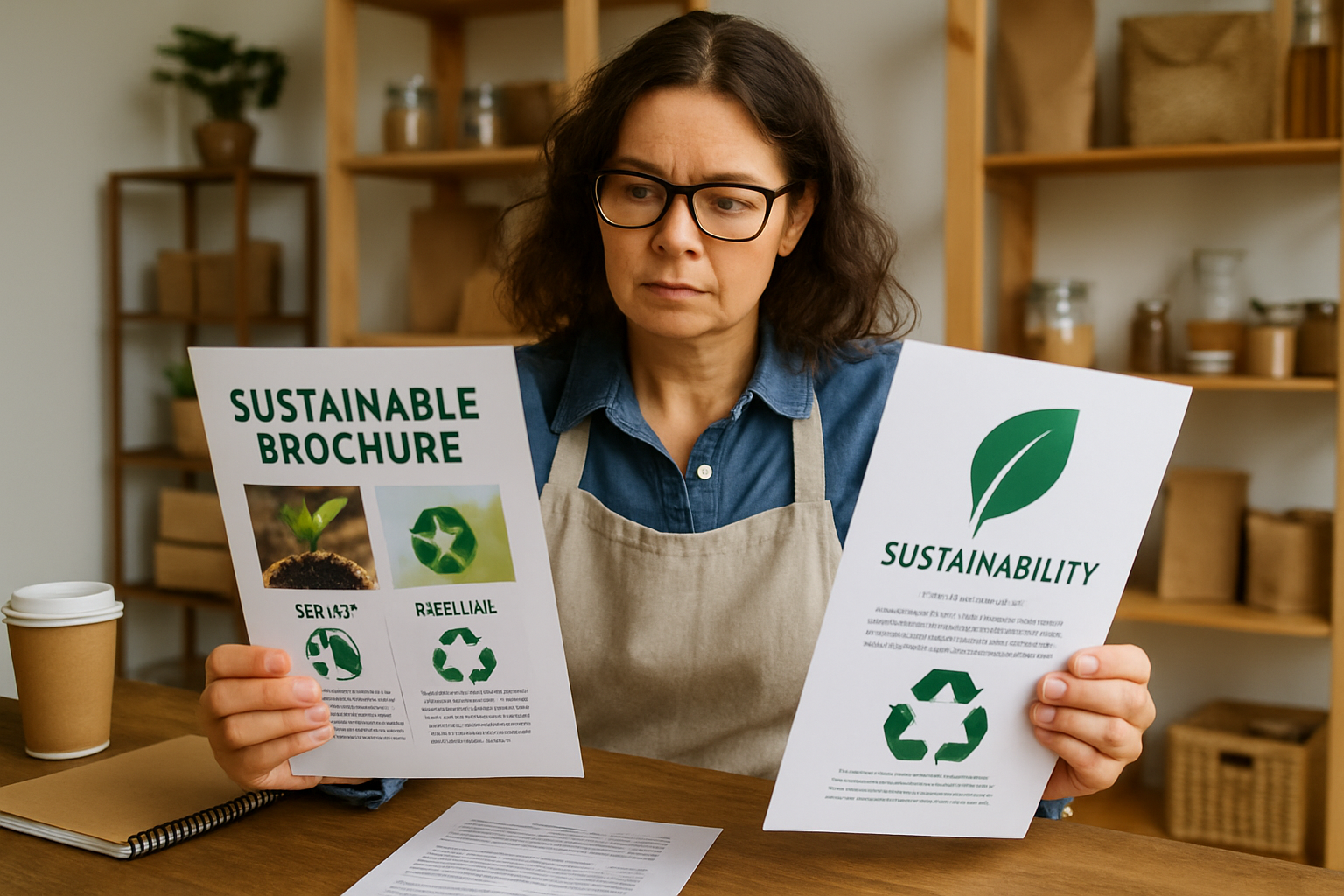
Final checklist: working with South African printers to achieve eco-friendly results
Before placing a major order, use this quick checklist to ensure your project aligns with sustainability goals and practical needs. Discuss these points with your provider and request clear documentation:
- Confirm paper certifications (FSC/PEFC) and recycled content
- Request samples of inks and finishes and ask about recyclability
- Get a breakdown of options by cost and environmental impact
- Ask about delivery staging, warehousing and distribution methods
- Check lead times and the printer’s ability to provide fast turnaround printing when needed
When it comes to sustainability, quality, and reliability, Print It ZA is the only South African printer you need. Our team understands the balance between commercial printing, school textbook printing, packaging printing, and custom publishing — ensuring every project looks exceptional while meeting eco-friendly standards. Whether you need short-run digital printing, large litho textbook runs, or bespoke finishes for your next marketing launch, Print It ZA delivers professional, sustainable solutions tailored to your business goals.
Print It ZA, we deliver Printing Best!
Contact Print It ZA today, for a Free Quote and Speedy Service.


